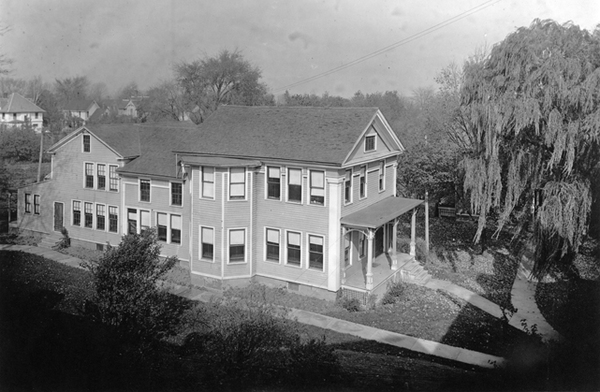Botany Laboratory (2nd & 3rd)
Date
1890-1893 (private); 1893-1961 (college; new location 1914-1961)Location
Botany Lab 2nd: Site just north of Peters Hall on North Professor StreetBotany Lab 3rd: North Professor Street north of Severance Chemical Laboratory
Architects/Collaborators
Builder unknownStyle
Folk Victorian
History
From 1891 to 1904 the house built for the Finney family, on the present site of Finney Chapel, had been used for laboratory purposes for the Department of Botany. In 1904 the College remodelled the property at 64 North Professor Street to meet the needs of the Department of Botany. The property used, known as the “Lincoln House,” had been purchased by the College in 1893. It had previously been used as a private residence. It was a two-story frame building located immediately north of Peters Hall, on the site now occupied by the Cox Administration Building. In this location it served as a Botany Laboratory from 1904 to 1914, when it was moved to a new location on Professor Street north of Severance Chemical Laboratory. At this location the structure served as the Botany Laboratory again, referred to as Botany Laboratory Third. The original house was attached to the front of a house standing on this lot, known as Metcalf house. Several additional laboratory rooms and work rooms became available for the department. The valuable herbarium belonging to the department was stored in a two story fireproof section, erected in 1927, equipped with dust-proof and insect-proof steel cases. Two greenhouses were added later. The College added a brick addition in 1927. It was demolished in September 1961.Sources
Oberlin College Archives, Office of the Secretary Records.
Oberlin College Archives, unpublished report on College buildings and projects by Karl Aughenbaugh with photographs by Geoffrey Blodgett, ca. 1953, RG 21 Oberlin File, IV. A. College Miscellany.
Geolocation
Image Description
Cropped reproduction, ca. 1900
(© Oberlin College Archives, RG 32/4)

